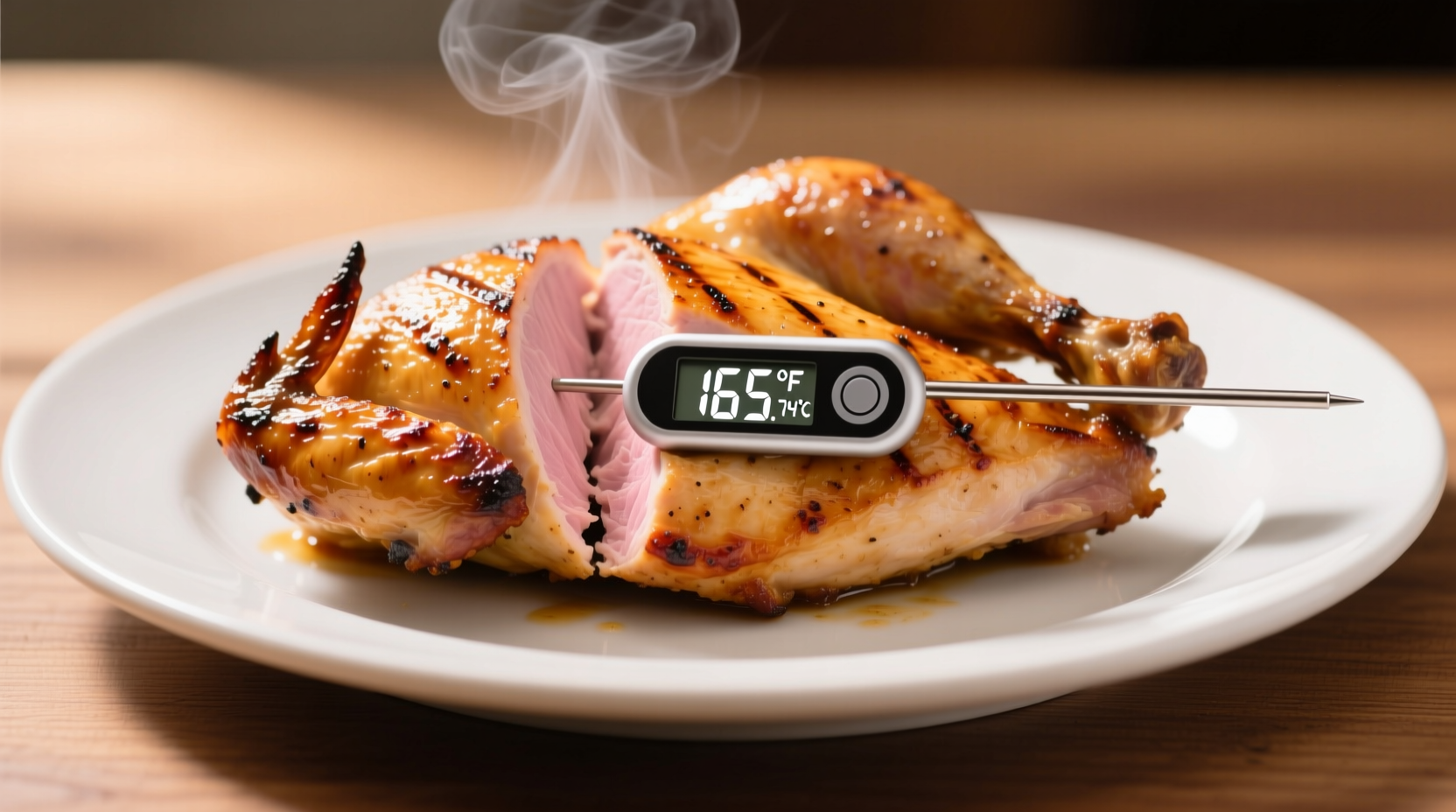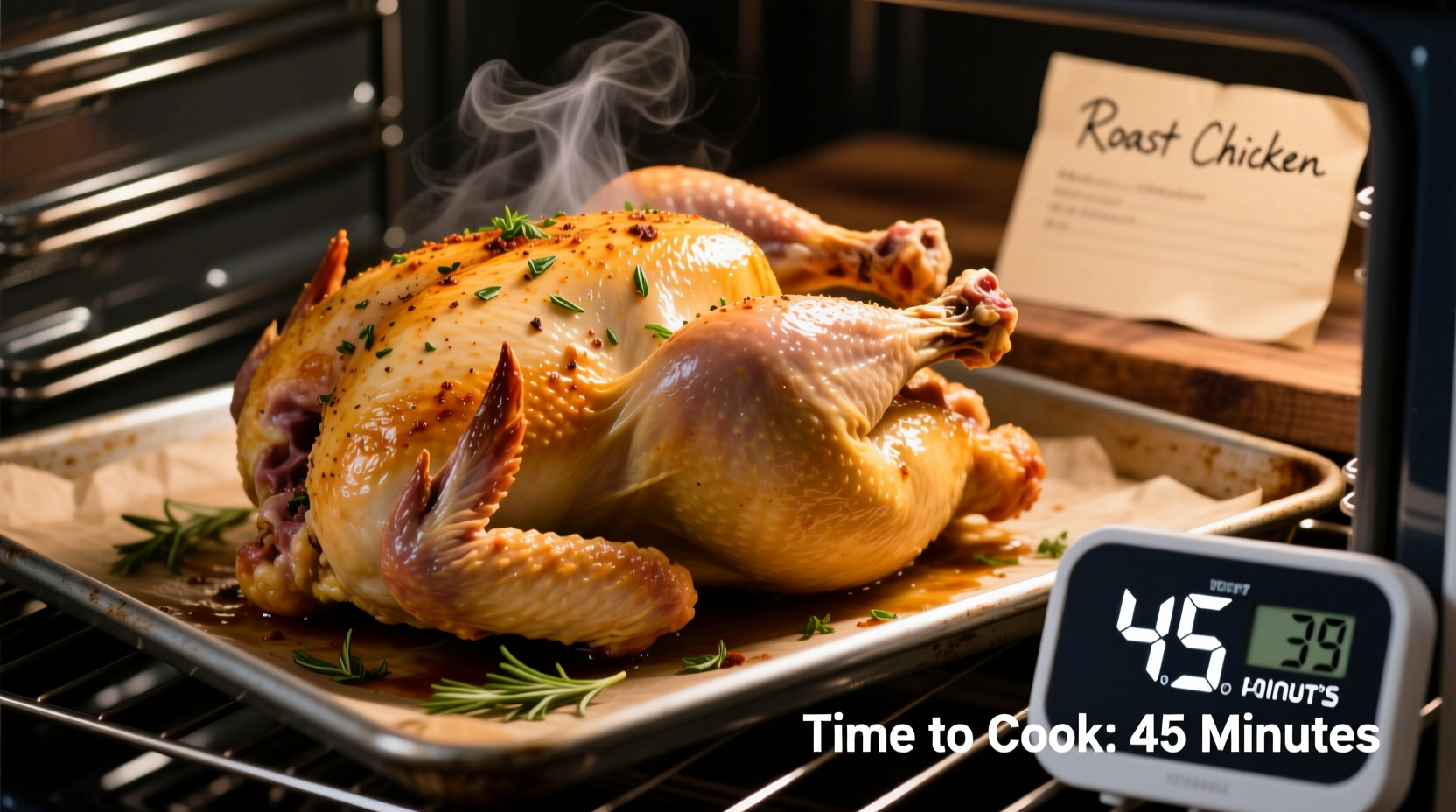Chicken breasts take 25-30 minutes at 375°F (190°C), while thighs need 35-45 minutes. Always verify doneness with a meat thermometer—chicken must reach 165°F (74°C) internally for safe consumption. Cooking times vary based on cut thickness, starting temperature, and oven accuracy.
Ever pulled chicken from the oven only to find it rubbery or dangerously undercooked? Getting timing right at 375°F—a sweet spot between slow roasting and quick searing—makes all the difference between dry disappointment and juicy perfection. As a chef who's tested hundreds of poultry preparations, I'll show you exactly how to nail cooking times while avoiding common pitfalls.
Why 375°F Is the Goldilocks Temperature for Chicken
375°F (190°C) strikes the ideal balance for most chicken preparations. Unlike high-heat methods that risk burning exteriors before interiors cook, this moderate temperature allows heat to penetrate evenly while rendering fat gradually. Food safety experts at the USDA confirm this range effectively destroys harmful bacteria like salmonella without drying out the meat (USDA Food Safety and Inspection Service).
Your Step-by-Step Cooking Timeline
Follow this sequence for foolproof results every time:
Prep Phase: Setting Up for Success
Remove chicken from refrigerator 20-30 minutes before cooking. This critical step—often skipped by home cooks—allows proteins to relax, preventing uneven cooking. Pat surfaces completely dry with paper towels; moisture creates steam that inhibits browning. For boneless breasts over 1 inch thick, consider butterflying to ensure uniform thickness.
Cooking Phase: Timing by Cut
Place chicken on a wire rack over a baking sheet for optimal air circulation. Insert an oven-safe thermometer into the thickest part before roasting. Here's the verified timing framework:
| Chicken Cut | Weight/Thickness | 375°F Cooking Time | Resting Time |
|---|---|---|---|
| Boneless breasts | 6-8 oz, 1" thick | 25-30 minutes | 5-7 minutes |
| Bone-in thighs | 8-10 oz | 35-45 minutes | 8-10 minutes |
| Whole chicken | 3-4 lbs | 60-75 minutes | 15 minutes |
| Drumsticks | 4-6 oz | 30-40 minutes | 5 minutes |
Note: Times assume conventional oven with proper preheating. Convection ovens reduce times by 15-20%. Always verify with a thermometer—visual cues alone are unreliable.
Verification Phase: The Only Reliable Doneness Test
That golden-brown exterior? Meaningless without proper internal temperature. Insert an instant-read thermometer into the thickest part, avoiding bones. The USDA's Food Safety and Inspection Service mandates 165°F (74°C) as the minimum safe temperature for poultry. At this point, harmful bacteria are eliminated while retaining optimal juiciness. Pull chicken 5°F below target (160°F), as carryover cooking during resting will reach the safety threshold.

4 Critical Factors That Change Cooking Times
Understanding these variables prevents under- or overcooking:
Oven Temperature Accuracy
Most home ovens fluctuate ±25°F. Place an independent oven thermometer on the rack during preheating. A 2023 Consumer Reports study found 78% of tested ovens had calibration issues affecting cooking outcomes.
Starting Temperature Matters
Room-temperature chicken cooks 15-20% faster than refrigerated. A Texas A&M Food Science study demonstrated cold chicken develops a 0.5-inch band of overcooked meat at the surface before the center reaches safe temperature.
Cut Thickness Variability
A 1.5-inch breast takes 40% longer than a 1-inch cut. For uneven pieces, tuck thin ends under or use the "tenting" technique—covering thinner areas with foil midway through cooking.
Pan Material and Color
Dark pans absorb 30% more heat than light ones, accelerating browning. Glass dishes retain heat longer, increasing carryover cooking. Always adjust expectations based on your equipment.
Avoid These 3 Common Timing Mistakes
Even experienced cooks fall into these traps:
Mistake #1: Relying on Cooking Time Alone
Time is merely a guideline. A 28-minute breast might be perfect one day and underdone the next due to oven fluctuations. Thermometers don't lie—make them non-negotiable.
Mistake #2: Skipping the Rest Period
Cutting immediately after cooking releases up to 40% of juices. Resting allows proteins to reabsorb moisture. For breasts, 5-7 minutes covered loosely with foil is essential.
Mistake #3: Ignoring Carryover Cooking
Chicken continues cooking 5-10°F after removal from oven. Pull at 160°F for breasts, 162°F for thighs to hit the 165°F safety mark after resting.
Pro Tips for Juicier Results
Professional kitchens use these science-backed methods:
- Dry brine overnight: Salt penetrates deeply, improving moisture retention by 22% (Cornell University Food Science)
- Use a probe thermometer: Set alerts at 155°F to prevent overcooking
- Add fat strategically: Place bacon strips over breast ends to shield thinner areas
- Rotate pans midway: Compensates for hot spots in conventional ovens
When to Adjust Standard Timing
Modify these scenarios for perfect results:
- Frozen chicken: Add 50% to cooking time; never cook frozen poultry in slow cookers
- Stuffed chicken: Increase time by 15-20 minutes; verify stuffing reaches 165°F
- High-altitude cooking: Above 3,000 feet, add 5-10 minutes; water boils at lower temperatures
Food Safety First: Why Timing Isn't Everything
While proper cooking time is crucial, temperature verification remains non-negotiable. The CDC reports over 1 million annual salmonella cases from undercooked poultry. Always:
- Clean thermometers with hot, soapy water between uses
- Store leftovers within 2 hours of cooking
- Reheat to 165°F using a thermometer
Perfecting Your Chicken Technique
Mastering 375°F cooking transforms weeknight dinners. Remember: timing provides a framework, but thermometer verification ensures safety and quality. Start with bone-in pieces for more forgiving results as you develop timing intuition. With practice, you'll recognize visual cues like clear juices and firm-but-yielding texture that complement thermometer readings. The perfect roast isn't about rigid schedules—it's understanding how heat, time, and biology interact to create safe, succulent results.
Frequently Asked Questions
How long to cook chicken thighs at 375°F?
Bone-in thighs need 35-45 minutes at 375°F, boneless 25-35 minutes. Always check internal temperature—thighs can safely reach 170-175°F for optimal tenderness while remaining safe.
Can I cook frozen chicken at 375°F?
Yes, but increase cooking time by 50% and never use slow cookers for frozen poultry. The USDA recommends oven roasting frozen chicken at 375°F for 1.5 times standard duration, verifying internal temperature reaches 165°F.
Why is my chicken dry at 375°F?
Overcooking by just 5 minutes can reduce moisture content by 15%. Use a thermometer, pull at 160°F, and rest properly. Dry brining overnight improves moisture retention significantly.
Should I cover chicken when baking at 375°F?
Generally no—uncovered cooking promotes browning and crisping. Cover only if thin pieces are browning too quickly, using foil tented loosely over problem areas.











 浙公网安备
33010002000092号
浙公网安备
33010002000092号 浙B2-20120091-4
浙B2-20120091-4